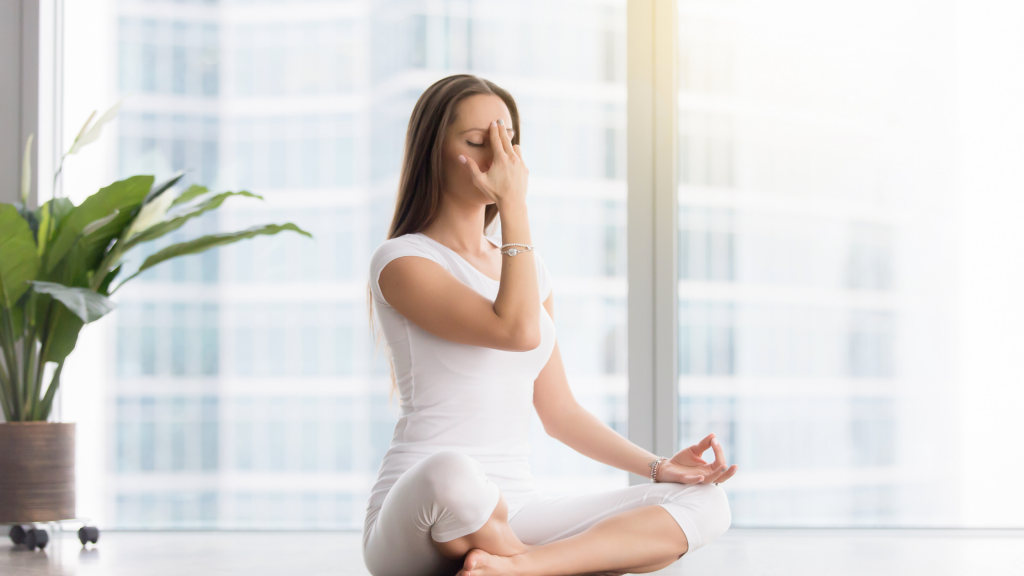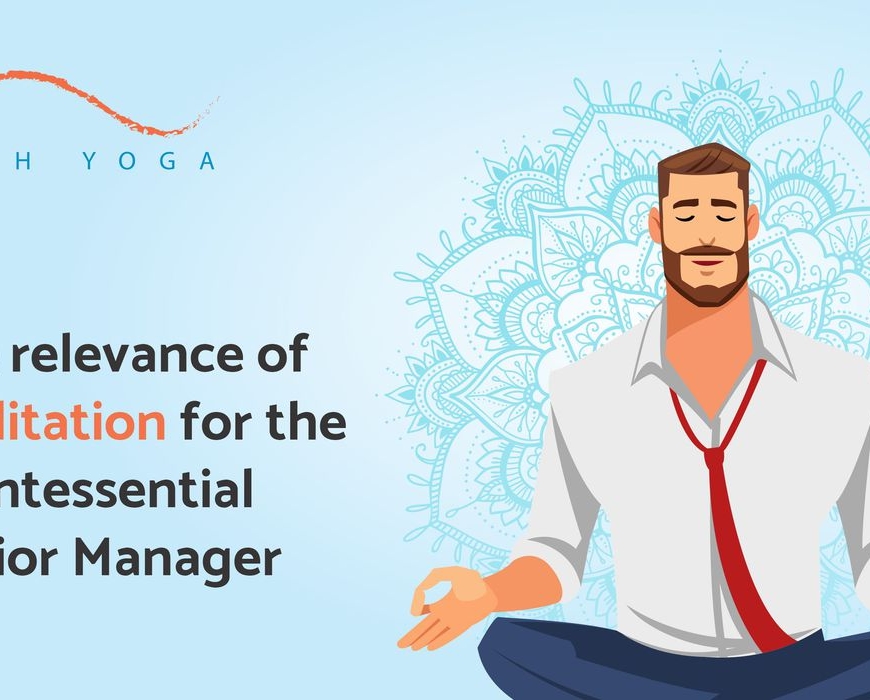Yogic Science has revolutionized the world, with its practices and techniques, especially in the field of mental health. Yoga is a mind and body practise that combines the power of physical and mental disciplines to bring in the peacefulness of mind and body. This can help in relaxing a tormented mind and instate tranquillity to the same. Several studies have found and established that Yoga helps to reduce stress levels and enhance the mood and an overall sense of well-being.
Yogic Breathing lies at the foundation of most yoga practices. Also known as Pranayama which means ” to the extent the vital life force”, yogic breathing and asanas go hand in hand and are together considered as the highest form of soul purification and self-discipline. Yogic Breathing and its emphasis on the mind-body connections help to yield strong emotional benefits in the form of better sleep cycle and reduction in stress levels by providing better circulation of oxygen and blood inside the body. While the best way to practice this is under the guidance of an experienced teacher, there are many simple techniques, which can be used to transform the state of mind through breathing.

10 Yogic Breathing techniques for Stress Control
Sama-Vritti or “Equal Breathing”
An excellent sleep-inducing yogic breathing technique, which will ensure a stress-free mind, is this breathing exercise called Sama –Vriti, which translates to ‘equal breathing. IT is especially effective before bed. In this exercise, you begin by sitting or lying down in a comfortable position and inhale for 4 counts, then exhale for the same. All inhalations and exhalations are to be done through the nose to ensure controlled breathing. An uninterrupted sleep schedule is a pre-requisite for stress relief.
Abdominal Breathing technique
Those nerve-wracking moments of our lives, when it becomes really difficult to handle the stress and maintain the inner-sanity, abdominal breathing comes as a blessing from heaven. This technique can be really helpful before experiencing a particularly stressful event, like taking an exam, where our hearts start pounding just by thinking about the same. The procedure to do this is to place one hand on your chest and other on your belly. Inhale taking deep breaths to create a slight stretching sensation in your lungs. Exhale slowly. It sets a serene sense of tranquillity in our minds and thereby in dealing with stress.
Kapalbhati Pranayama
Otherwise known as Skull Cleanser, Kapalbhati Pranayama means skull shining breath. The main aim of this form of yogic breathing is to clear the mucus in the air passages, relieve congestion, reduce bloating, and improve lung capacity. However, it also facilitates in inducing an invigorating breath that can build body heat, that facilitates a proper bowel moment, which in turn helps in fighting a stressful mind. You need to start sitting comfortably seat with a tall, straight spine and exhale completely. Inhale briefly through both the nostrils, then sharply exhale (again out of your nose) while pulling your navel in towards the spine. The exhalation should be quick and active while inhalation short and passive.
Ujjayi Pranayama
This yogic breathing exercise caters to reducing the stress and anxiety level in the brain and thereby providing for a calmer mind. Ujjayi means ‘victorious breath’ concerning ocean breath, due to the sound it creates. It encourages the full extension of lungs and by focusing your attention on your breath, it can assist in calming the mind,. For this, you need to take a steady breath through both the nostrils. Inhale until you reach the lung capacity and hold your breath for a second. Then constrict some breath to the back of your throat, mimicking a whisper or secret, and exhale through both the nostrils.
Sitali Pranayama
The term ‘sitali’ means cooling. Sitali Prayanama requires you to roll the tongue until the outer edge forms a tube. Then you have to inhale through the mouth, taking all the air that you can. It may make a hissing sound. After inhaling, bring the tip of your tongue to the roof of your mouth and seal your lips. Feel the coolness of the breath during inhalation and exhale through the nostrils. This breath envisages clearing heat with coolness and thus brings out a sense of tranquillity in the mind.
Bhramari Pranayama
All those buzzing thoughts that keeping pounding your mind and make it irritable and disruptive, can cause severe stress and anxiety issues. BHramari or bee breath is a form of yogic breathing that helps in putting a brake into this depressive anguish and thoughts and thereby promotes calmness. It is a boon for hypertension or people with disturbed sleep patterns. You need to cover both the ears with your fingers and start inhaling with closed eyes. After holding the breath for a second, exhale and feel rejuvenated.
Nadi Shodhan Pranayama
Lack of concentration and a wandering mind, pose some serious threat to the professional productivity and effectiveness of a person. Consequently, failure or lack of appreciation can lead to a lot of stress and anxiety. Experts believe that trying nine rounds of the Nadi Shodhan Pranayama( alternate nostril breathing), following a ten-minute meditation, can help subside the effects of stress and trauma. This exercise calms the brain down and centers the mind by bringing harmony between both the hemispheres of the brain. You need to breathe through one nostril, while the other will be closed with the thumb, hold the breath for a few seconds, and then exhale, through the other nostrils. This can be continued alternately.
Kumbhaka Pranayama
This form of yogic breathing exercise essentially translates to being able to retain your breath for longer. If you inhale fully and wait for 10 seconds, you will be able to inhale more. Holding breath increases the pressure inside the lungs and give them time to fully expand, increasing their capacity. As a result, the blood that flows in the heart and brain will be more oxygenated. It is an excellent remedy for distressed and anxious people. They can facilitate a calmer and rejuvenate a sense of being through the same.
Lion’s breath
It is a fun yet effective method of pranayama, which invites a little playfulness into the practice. It is a breath control activity that induces a sudden release of breath and bringing in a sense of positivity and lightness. Lion’s breath involves inhaling deeply through the nose then leaning your head back and opening your mouth very wide to exhale loudly while sticking out the tongue. It can also be performed by raising the arms, at the time of inhaling and forming cactus arms with your exhale, to enhance the reliving effects. Lion’s breath is a very kid-friendly breathing exercise and encourages deep motivation among them.
Bellows Breath
A contemporary power yoga exercise which is an amazing way to begin the day, making you feel relaxed and rejuvenated, is Bellows Breath. Here you need to raise your hands in the sky in little fists or with the fingers splayed outside. Inhale through the mouth and will every exhale, drop the elbows into the side body and make a “HA” sound, from the bottom of the diaphragm. This in turn induces the toxic stagnant frustrations to be discarded very quickly and thus ensure peace and tranquillity of mind.





Add Comment